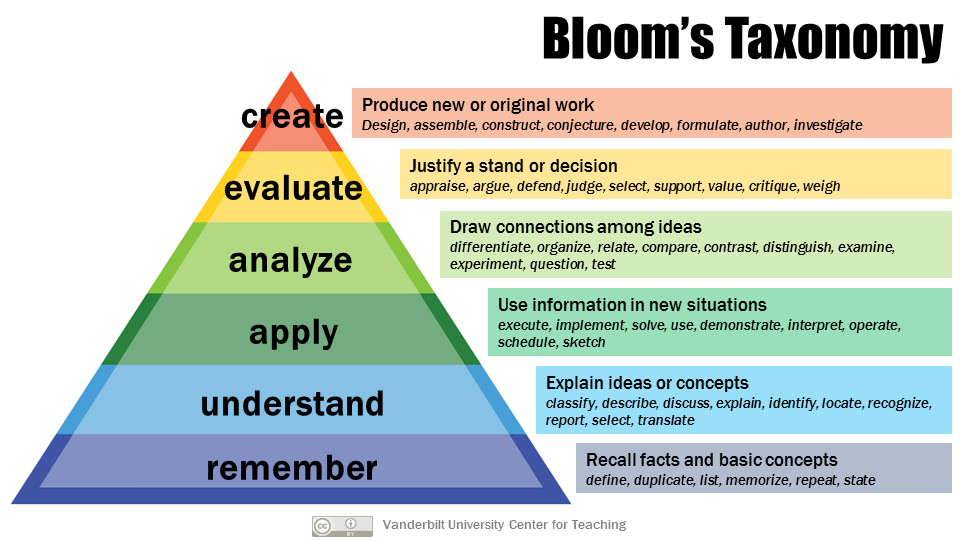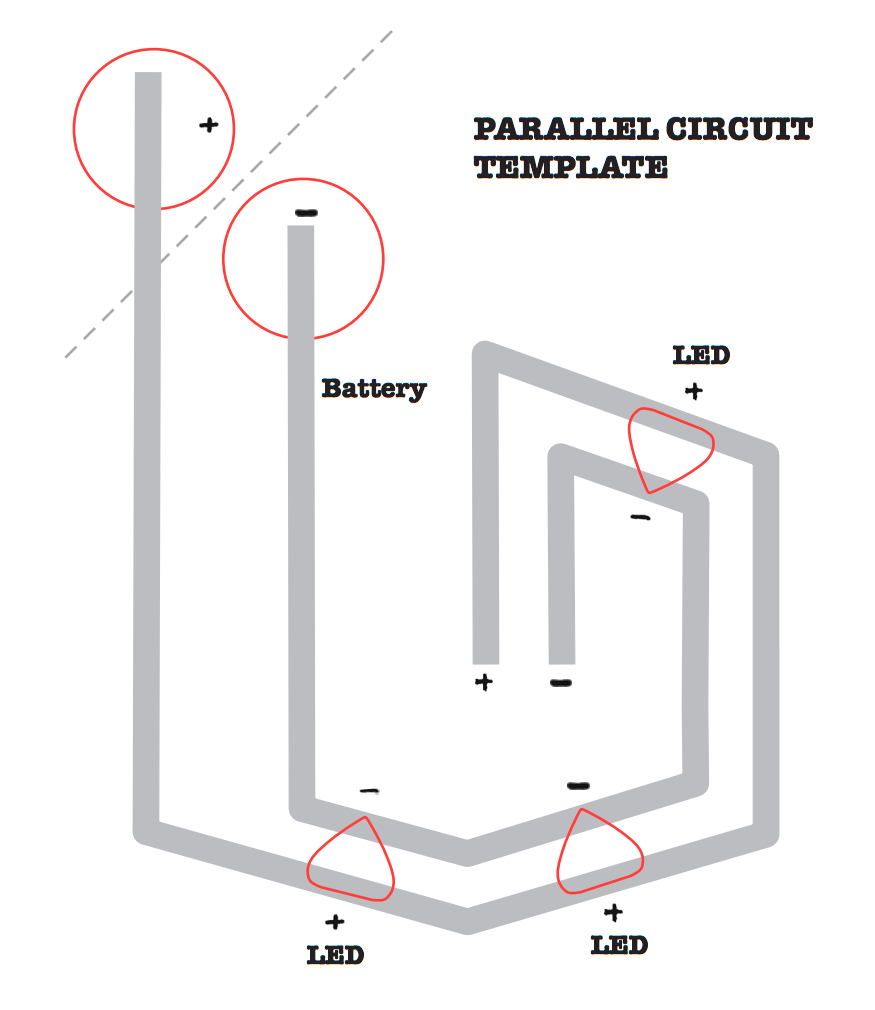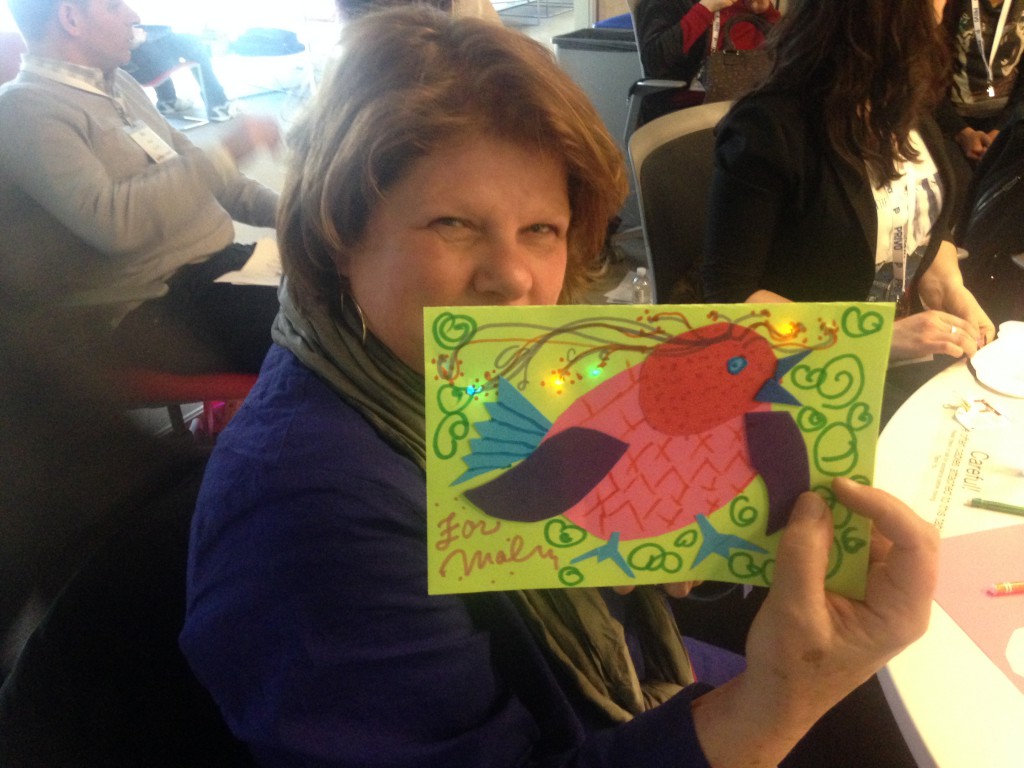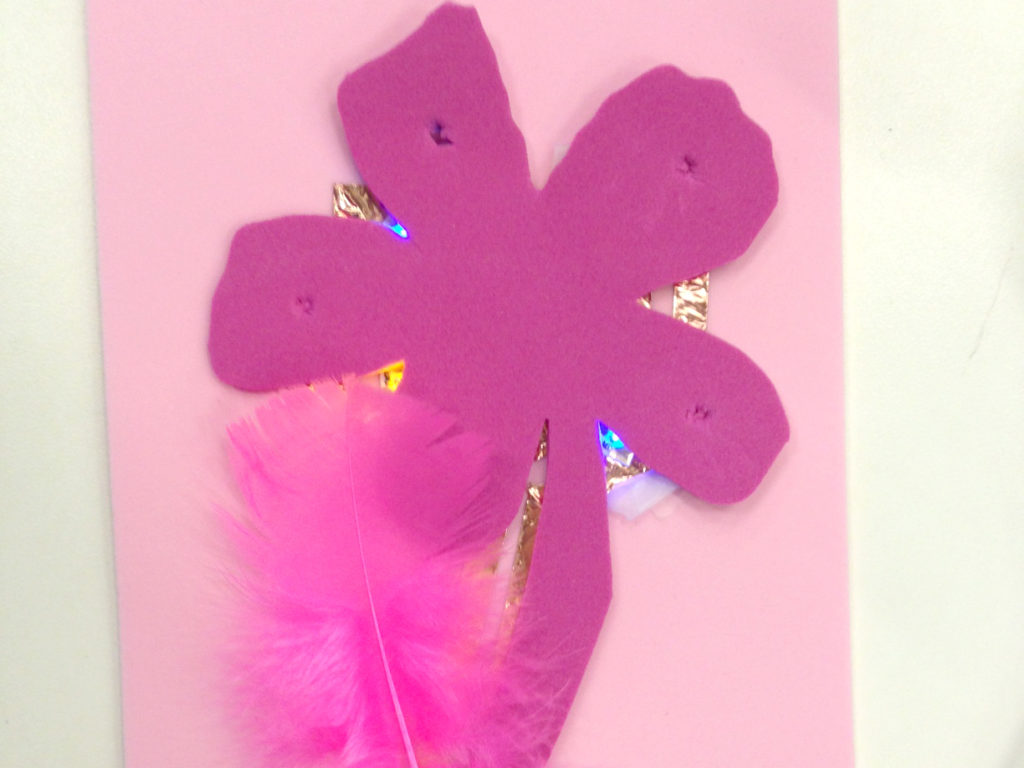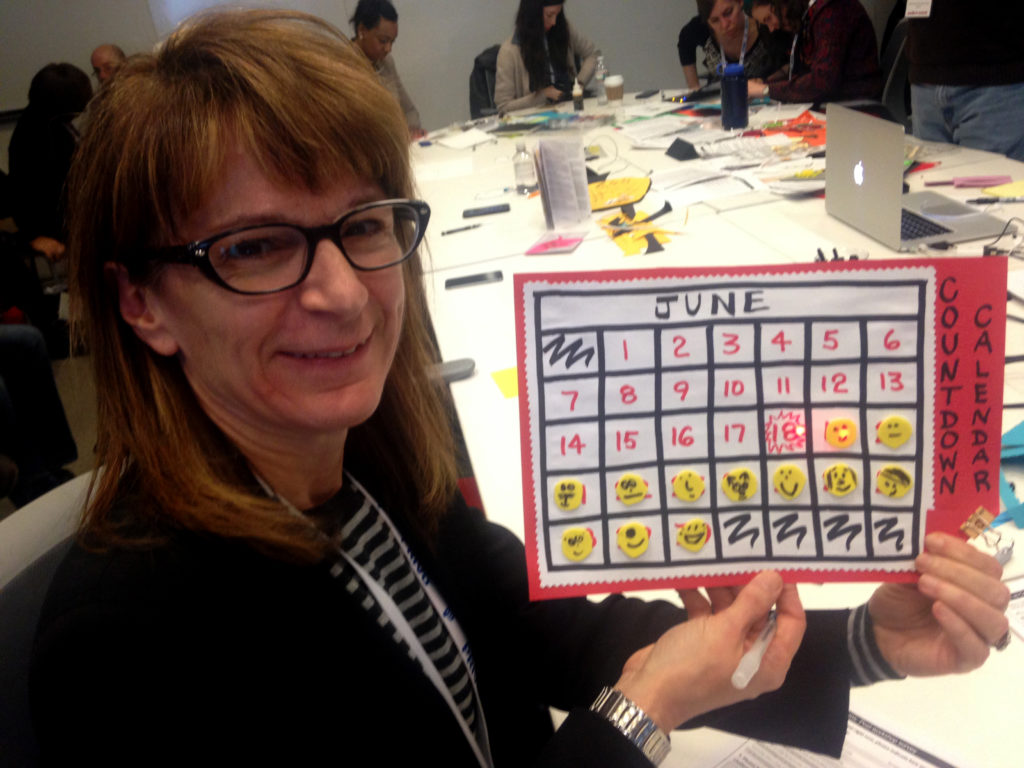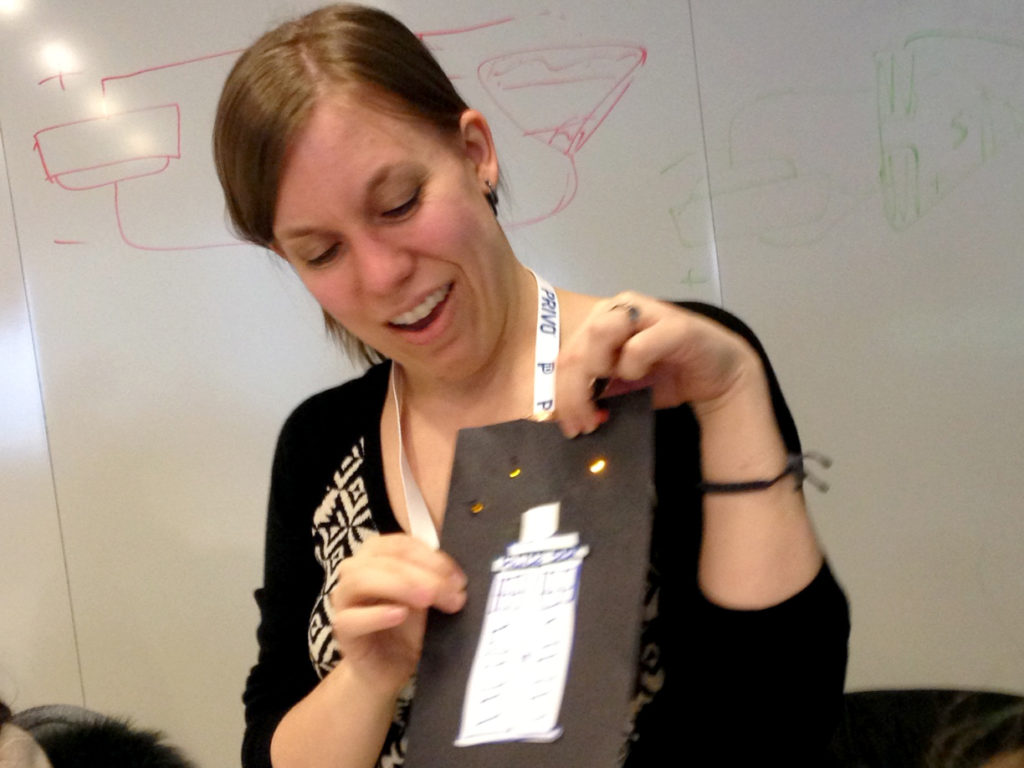What Makes Your World Shine?
Parallel and Series Circuits Lesson Plan
Overview
Materials, Tools & Template
Instructions
Wrap-Up
Project Gallery
Education Standards
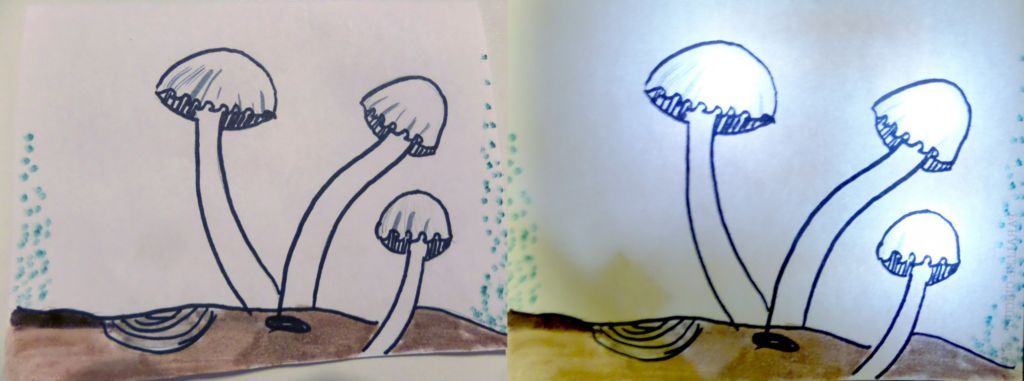
Overview
Grades: Elementary
Estimated Time: 60 minutes
Lesson Objectives: Build a circuit with two or more lights. Design a light-up card. Learn how series circuits and parallel circuit works.
This activity introduces parallel circuits and series circuit using Chibitronics LED light stickers. The students will be able to identify and represent things that are part of their world by making a light-up card. This activity is an extension to the basic circuits. If your students already have some experience in creating basic circuits with an LED light sticker and a battery, you could encourage them to design circuits with more lights.
Materials
- 2 or more LED light Stickers
- 1 or more coin cell batteries (3V)*
- 1 Binder clip
- Conductive copper tape**
- Parallel Circuit Template
- Series Circuit Template
Chibitronics Products
• Classroom Pack of Red, Yellow and Blue LED stickers
• Classroom Pack of White LED stickers
Tools
- Drawing Tools
- Scissors
*Store your batteries separately, and away from other bits of metal. This avoids accidental connections that can drain the batteries.
**The edges on the copper tape can be sharp. Watch your fingertips!
Additional Resources
Quick Start Guide: Circuit Stickers
This guide shows both types of circuits and explains the concepts nicely!
Parallel and Series Circuits
Another post specifically focused on series versus parallel circuits
Instructions
Let’s Begin!
0. Create two examples of your own light-up card, one with a series circuit (instructions here) and another with parallel circuit (instructions here). Share your projects with your students.
1. Revisit basic circuits. Ask the students what they recall about their first circuit.
2. Pass around the template, copper tape, battery, LED lights and binder clip.
3. You could divide the class in two groups and distribute series circuit template to one group and parallel circuit to the other group. Later you could encourage members of both groups to form pairs and share their circuits with each other.
4. Once the circuit is complete and working, have the students share them with each other. You could use this step as an opportunity to provoke questions and also encourage the students to share their questions with the group.
Question Prompts:
• Describe what… ?
• What would happen if …?
• Why do you think that …?
• How would you…?
• What is the difference between…?
• Remember to ask, “What questions do you have?”
If their circuits are not working, give students opportunities to troubleshoot. Allow them to identify the problem themselves and support them if they need scaffolding. You could also encourage them to ask their peers for help.
5. Ask students to share things that they want to illuminate. You could encourage them make a list of things that they are familiar with and are part of their world.
Creative Prompts:
• Things that shine
• Things that glow in the dark
• Things I wish could illuminate
If a student get stuck, you could share some examples such as stars, fireflies, firecrackers, jewels, eyes, heart, sparkling soda etc. Remember there are no right answers. Let them run wild with their creative ideas.
6. Have the students quickly share their list with their peers.
7. Ask students to choose one object from their list. Ask them to fold their templates and draw the object or multiple copies of the object in the front. Encourage them to align these objects in their drawings with the lights.
8. Students can choose it they would like to add or remove a light from their circuit based on their drawings. This could be an opportunity for them to apply their knowledge and skill of creating series or parallel circuits.
Wrap-Up
9. Encourage students to decorate their cards and share things that are part of their worlds with a large group.
10. Give the students a chance to share their learning experiences with the group.
Reflective Prompts:
• How would I do this differently?
• What are some ideas for projects that I can make using parallel and series circuits?
• What are the things I am curious to know more about circuits and electronics?
Make sure to notice children’s engagement and process while doing this activity. Listen to their ideas and ask them questions about their creations.
Project Gallery
Alignment to Standards
We think the following standards are most relevant to this activity. You could adapt this list for your class session. The complete list of all the standards can be found on the respective websites of each framework.
- Creativity and innovation- Students demonstrate creative thinking, construct knowledge, and develop innovative products and processes using technology.
a. Apply existing knowledge to generate new ideas, products, or processes
b. Create original works as a means of personal or group expression - Technology operations and concepts- Students demonstrate a sound understanding of technology concepts, systems, and operations.
c. Troubleshoot systems and applications
- Practice 1 Asking questions and defining problems
- Practice 6 Constructing Explanations and Designing Solutions
You could also refer to Bloom’s Taxonomy as part of your classroom assessment.
